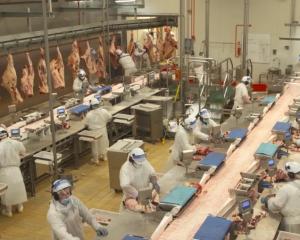
Central Otago sheep and beef farmer Tim Davis is testing his calves for the disease.
Disease eradication agency Ospri said the control area for cattle and deer in Tarras, Lindis Valley, the upper Manuherekia and the top end of Ida Valley being introduced on October 1 would affect about 110 properties.
Mr Davis said his yearling calves would be tested for the disease on Friday.
If the calves were free of the disease, he would sell the steers and move them from his 3340ha sheep and beef property, Longacre Station, in Lindis Valley, north of Tarras, next week.
Cattle and deer in the new control area, 3 months or older, must be Tb-tested within 60 days of being moved.
Animals going directly to slaughter did not require a test.
"We’ve got to try and stamp it [Tb] out and stop it spreading.
"It’s a bit of a pain, but it is what it is and we’ll work with Ospri and hopefully get on top of it," Mr Davis said.
Breeding livestock run on Longacre Station, which spans from the valley to the foot of St Bathans Range, included 180 cows, 60 heifers and up to 6000 merino ewes.
The disease had not been detected in cattle at Longacre Station for decades, he said.
Although he was not required to test cattle before next month, he was doing it to give buyers "peace of mind".
He believed his calves were at low risk of infection because they had been eating fodder beet in paddocks for the past six months and had been nowhere near bush, where infected possums could potentially be.
He was nervous about the impact an outbreak could have on his farm operation.
If his herd was infected and a drought hit, he would be unable to sell scores of steers quickly to save feed and water for his sheep breeding enterprise.
More supplementary feed would need to be brought in for his livestock, which could be challenging to find in a drought.
Ospri Otago farmer committee chairwoman Vanessa Hore said all of the affected farmers had been provided information and needed to understand the risks.
"There is nothing simple about fighting bovine Tb and the possums that carry it, so we have to do what we have to do.
New Zealand had 15 herds infected with bovine Tb and a third were in Otago, where the disease was known to be circulating in wildlife, she said.














